Medical Gaslighting as a Source of Clinician-Associated Trauma
Content warning: This article discusses medical gaslighting and real-life examples of clinician-associated trauma. Please take care of yourself as you see fit.
As previously reported, clinician-associated trauma (CAT) is a new term used to describe the trauma created by repeated, negative clinical interactions. It was coined as a result of the study reported in “Clinician-associated traumatization from difficult medical encounters: Results from a qualitative interview study on the Ehlers-Danlos Syndromes” by Colin M.E. Halverson, Heather L. Penwell, and Clair A. Francomano. This is a distinction from the traditional definition of medical trauma which relies on one major traumatizing incident (or a series of incidents confined to a short period of time) as the basis for applying the or any related diagnosis. While the study on CAT described many incidents of patients being hurt, disregarded, and abused by clinicians, naming these different methods of traumatization can help us identify them and develop ways to fight them. This article will cover medical gaslighting, while implicit and explicit bias, various imbalances between patients and clinicians, language use, and more will be discussed in future articles.
Stories about medical gaslighting abound in the chronic illness community. In March 2020, the New York Times published an article (gift link) called “Women are Calling Out ‘Medical Gaslighting’”, written by Melinda Wenner Moyer. The article shares the traumatic medical stories of four women along with various studies about discrepancies in medical care between men and women. As of the writing of this article, the comment section had 3,623 comments. Another article (gift link) by the New York Times, published in July 2022, discussed ways women could spot medical gaslighting and what to do about it. That article had 2,107 comments.
The concept of gaslighting, including medical gaslighting, has exploded into the mainstream, appearing in memes, in television shows and movies, and on countless websites teaching how to spot gaslighting in situations from romantic relationships to the workplace. Gaslighting as a concept has become so ubiquitous in society that it was named Merriam-Webster’s word of the year in 2022 (Durbhakula & Fortin, “Turning Down the Flame on Medical Gaslighting”, 2023). However, the concept often is confused with outright lying or people having different interpretations of the same event. Gaslighting, especially medical gaslighting, is more specific than that.
What Is Gaslighting?
Gaslighting is the use of psychological techniques to purposefully deceive a victim into questioning their own understanding and perception of reality (Psychology Today). It is done deliberately with the intention to be misleading and to manipulate and abuse the victim. It can involve behaviors like lying, isolation, blaming, denial and more from the gaslighter to make the victim doubt their own memories and understandings. Medical gaslighting, however, has a more specific definition: it is the invalidation, dismissal, and denial of symptoms presented by a patient. Medical gaslighting often tries to ascribe symptoms to other causes, such as psychological issues or a patient’s need for attention (Healthline). It’s important to note that medical gaslighting is usually not done purposefully.
Medical gaslighting is one of the specific behaviors described in Halverson, et al. (2023) that leads to clinician-associated trauma. “Several participants believed they were ‘going crazy,’ and one even characterized this feeling as a response to ‘medical gaslighting’,” a term discussed in a 2018 article by Ashley Fetters entitled, “The Doctor Doesn’t Listen to Her. But The Media Is Starting To,” published in The Atlantic (Halverson et al., 2023). It actually was Sasha Ottey, the founder of PCOS Challenge: The National Polycystic Ovary Syndrome Association who first called this phenomenon “health-care gaslighting” (Fetters 2018).
The term “medical gaslighting” first appeared in medically-related literature in a 2020 article, though it had likely been in use longer. It was in an article from the Journal of American Medicine about Hanna Lockman, who is a COVID “long-hauler”–someone whose COVID symptoms haven’t resolved weeks or months after they first started. Lockman and her symptoms were initially dismissed by her doctors (Rubin 2020). In the article, Lockman stated, “[Long-haulers] experienced so much medical gaslighting, basically doctors telling us, ‘That’s not what you have. It’s just anxiety’” (quoted in Rubin 2020). She didn’t know she was bringing to the forefront a phrase that many other patients, especially those with rare, invisible, and/or chronic illnesses would immediately understand.
Repeated interactions with the healthcare system create repeated opportunities for patients to be harmed–a phenomenon that people without chronic illnesses don’t face nearly as much simply because they don’t interact with the healthcare system as often. In a survey distributed to Facebook users in groups for the Ehlers-Danlos Syndromes [EDS] by the author of this article, one respondent, who asked to be identified as a female in her late 20s from the Midwest, said, “I have too many [stories] to tell and am currently in therapy to work through how much medical trauma I have to make sure I can actually continue to go to medical appointments and seek care.” How far must a healthcare system have gone astray when patients need therapy to seek necessary health care?
This survey respondent, who has the trifecta of hypermobile Ehlers-Danlos Syndrome (hEDS), dysautonomia, and mast cell issues, went on to add, “Medical trauma is real and makes every time going to the doctor very scary especially with an invisible disorder like hEDS. It makes you rethink yourself constantly, do I have this condition, or is it all in my head like [the doctors] say it is.”
Symptom invalidation or making a patient second-guess themselves is one of the hallmarks of medical gaslighting. Others, such as lack of empathy, minimization of concerns, placing the blame on the wrong source, and more are discussed in detail below. This article could easily overflow with examples of medical gaslighting. The stories shared below are a minuscule sampling of the clinician-associated trauma meted out every day in the healthcare system.
Invalidation of Symptoms
Invalidation of symptoms is a common way clinicians will medically gaslight their patients, sowing doubt in the patient’s mind that their symptoms might not be real. The behavior can be as obvious as stating, “I don’t believe you” or “it’s all in your head” to other subtle phrases like, “That symptom isn’t possible considering other factors about you that we know are true” or “Your tests and labs look fine. There’s nothing wrong with you.” It can even be as blunt as “you’re not really having these symptoms.” This can lead to patients feeling unheard, leading to frustration and distress.
Again, Halverson et al. reports from their interviews: “Many participants additionally expressed a growing self-doubt, coming to question their own experiences and sensations. “One woman described an encounter with a clinician whom she recalled telling her, ‘I think this is all in your head.’ ‘How would that not make someone doubt themselves, when a medical doctor tells me that he thinks it’s all in my head? […] And I’m like, ‘What if it is? What if I’m just making all this up and I’m just crazy?’” (355) [number refers to an anonymous number assigned to interviewees].” The patient may then not seek additional medical attention, letting potentially harmful symptoms go untreated.
Invalidating the symptoms a patient reports can come with a casual suggestion to exercise more, lose weight, eat more healthfully, drink more water or another lifestyle change that rarely addresses the issue the patient came to be seen for. The survey respondent from earlier in the article, the female in her late 20s from the Midwest, described a situation where a clinician brushed off her symptoms:
I recently went to an orthopedic sports medicine doctor to be seen for my hips. He did not take me seriously, telling me my pain is all in my head and I need to exercise more. He then had the audacity to tell me that my hips don’t sublux because that joint is too solid. He had X-rays completed but stated that it was standard practice. When looking at my X-rays he found that I had bilateral hip impingement, severe tendinitis causing bone spurs, and bilateral piriformis syndrome.
Thankfully, she was able to get x-rays to prove that her symptoms were real. Many patients do not get this option, and instead, leave with more doubts than answers.
Another way clinicians can invalidate symptoms is by the use of algorithms. In the New York Times article, “Women Are Calling Out Medical Gaslighting”, the author spoke with a cardiologist about the evaluation of heart disease symptoms in men and women: “‘[W]omen with heart disease often have different symptoms from men with heart disease, yet doctors are much more familiar with the male symptoms,’ said Dr. Jennifer Mieres, a cardiologist with Northwell Health in New York. When ‘women show up with symptoms that don’t fit into the algorithm we’re taught in medical school,’ she said, they get ‘gaslighted and ignored.’”
While they can be time- and labor-saving in numerous situations in the healthcare system, algorithms and the exclusion of patients by them can be another form of medical gaslighting. Algorithms are “mathematical models used to make decisions in the field of medicine. These algorithms take into account a variety of factors, including patient symptoms, medical history, and test results,” according to the website ForeSeeMed. Clinicians can use them in an analog setting (paper, books, charts) or a computerized setting, which may include artificial intelligence (AI). Algorithms can be used in diagnosis (think WebMD’s Symptom Checker), in deciding testing and treatment options, in clinical research. With the proliferation of AI, algorithms are expanding to more and more areas each day.
Algorithms help clinicians analyze a large volume of information in a shorter period of time, freeing them to potentially see more patients. If a patient calls the urology department, concerned that she has a urinary tract infection, a nurse or other employee can ask the patient questions that come from an algorithm. It may help the nurse to decide if the patient can care for themself at home, needs to be seen in clinic and how soon, or if they need to get urgent or immediate care. This allows personnel other than clinicians to collect pertinent information or to make decisions that would have otherwise required a trained clinician.
As helpful as algorithms can be for standardized care, patients who don’t fit the model will often be missed by algorithms. Rare diseases, like the Ehlers-Danlos syndromes, will often not be factored into algorithms, meaning symptoms can be ignored, given too much importance, or a satisfactory answer not found (Forbes). This can lead to clinicians medically gaslighting their patients into believing their symptoms are not real or not as bad as they think they are simply because the algorithm said so. Hopefully, the clinician will think beyond the algorithm, but too often, other clinicians take the results as the be-all, end-all of decision making.
Minimizing Concerns, Denial, and a Lack of Empathy
When a patient’s body is in distress, it’s sometimes all a patient can think of. Her entire life–work, social life, child care, transportation, romantic life, and more–can be affected by the symptoms she’s experiencing. She may have jumped through a number of hoops and over a number of hurdles to get to this healthcare appointment, arranging time off work, which, for some, can mean loss of income; arranging child or elder care; arranging transportation and travel, from finding a ride to an appointment that happens when most able-bodied adults are working to buying plane tickets and securing accommodations; filing, following up on, and getting insurance approvals; explaining to friends, family, co-workers, and potentially others where she’s going and why while dealing with their suggestions about what she should do instead and potential skepticism surrounding her symptoms; and convincing herself that her symptoms are bad enough to warrant medical intervention and this amount of potential disruption to her life.
Upon seeing the physician, a patient’s hopes for an answer, a diagnosis, and a solution hang in the words she exchanges with the clinician. In one statement–“This isn’t really that bad,” “A lot of people are tired all the time,” or “It’s probably just due to your period or hormones”–a clinician can make all of the work the patient has done and all of the courage she has built up amount to absolutely nothing; all the time, energy, money, mental space, and more–it was worth nothing. She leaves the encounter feeling insecure and stupid for even thinking her symptoms matter.
It’s a scenario that is all too common in the medical world, especially for patients looking for answers for unexplained symptoms that don’t have an easy explanation. Halverson et. al. (2003) report that the patients they interviewed felt clinicians were overly skeptical and not empathetic about pain and fatigue, because they are symptoms that are hard to pin down. This, in turn, caused the patients to doubt themselves and to be afraid of future medical interactions.
A respondent to the survey sent out by the author of this article, Callie, shared a story about her concerns being minimized to potentially deadly consequences:
I had episodes of heart palpitations that would cause me to faint as a child. My parents would take me to the doctor for these concerns, and not one time did they investigate further. Every time I would be dismissed and told that I just have anxiety. [Doctors] would prescribe me more mood stabilizers, to which I would react badly to. When I would speak up about the reactions, the doctors and my parents would play me off as being dramatic. Come to find out, 30 years later, that [the episodes] were not panic attacks and that I was born with heart defects such as PFO [patent foramen ovule, a failure of the hole between the left and right atria to close] and ASA [atrial septum aneurysm, a congenital malformation that causes a bulge in the wall between the left and right atria]. I was also diagnosed with autonomic dysfunction which is causing me to have frequent episodes of SVT [supra-ventricular tachycardia, a fast or erratic rhythm in the atria], blood pressure issues, and much, much more.
Another patient, Samantha, recalls a time before she was diagnosed with hEDS, when she had a bout of fatigue so severe that she booked an appointment with her primary care doctor. She had to take her toddler son with her, as she couldn’t find childcare. After explaining her symptoms to the clinician, he motioned to her son and said, “There you go. That’s why you’re tired all the time.” Samantha was furious with the clinician. “Does he think that I don’t know the difference between regular, ‘mom fatigue’ and debilitating fatigue that might indicate something is wrong with me?” she asked. It would be another ten years before Samantha was diagnosed with hEDS and postural orthostatic tachycardia syndrome (POTS).
In situations where the clinician doubts the patient’s symptoms are real, the clinician may diagnose somatic symptom disorder, a condition in which a patient is so focused on physical health symptoms that it interferes with functioning and/or leads to major distress (American Psychological Association). They may also diagnose factitious disorder imposed on self (formerly known as Munchausen syndrome) if they believe the patient is making up the symptoms (Cleveland Clinic). Clinicians who are, quite frankly, lazy will often apply these diagnoses to patients who repeatedly return, insisting there’s an answer for their symptoms. Other clinicians can see these diagnoses in the patient’s chart, and it can bias them against anything the patient might say. It can take years for a patient to appeal to enough clinicians and administrators to get an erroneous diagnosis of somatic symptom disorder or factitious disorder imposed on self removed from their medical record.
Out-right denial of symptoms by a clinician and a complete lack of empathy regarding what a patient might be going through, can understandably make the patient feel uncared for and unwanted, as described by a man in the patient incivility study discussed in “Experience of Patient Incivility: A Qualitative Study” by Emily A. Vargas & Ramaswami Mahalingham, published in the Journal of Patient Experience:
…I was told I was lying about being sick. I was told that I had lost 45 pounds in 2 months because of a mild cold, and that I was wasting their time. They tried to make me feel like I was a burden, and I was taking away from other patients who they implied were sick. Turns out I was sick, and I needed surgery. Going to a hospital out of town, they diagnosed my problem within 1 visit. [Participant 275: 34 year old, White Man]
Many of the stories in which a clinician doesn’t believe a patient revolve around pain. Pain is a symptom–that is, a subjective feeling or experience reported by the patient–as opposed to a sign, something a clinician can objectively see or observe, sometimes with the help of a test (GoodRx). Using those definitions, pain is a symptom, crying is a sign. Tingling in the hand is a symptom, a fever is a sign. Since pain isn’t objective and observable, clinicians can doubt its existence easily. Another participant in the patient incivility study reported that she was “giving birth and was supposed to have a C-section. I got my epidural but I told the doctor that it’s not working. They didn’t believe me so when they started cutting I started screaming because the epidural was not working. [Participant 292: 30 years old, White Woman].”
Outright dismissal of patient symptoms, denying the presence of those symptoms, and lack of empathy around patient experiences all culminate into clinician-associated trauma. Jessica Dine, a pulmonary specialist at the University of Pennsylvania Perelman School of Medicine, as quoted in the COVID “long-haulers” article linked above, has a simple solution: “One of the first steps is believing [patients] and making them feel heard. That alone helps.”
Blaming Mental Health
K (her chosen alias for this article) saw a rheumatologist after her primary care provider suspected she had EDS. The rheumatologist examined K, diagnosed her with anxiety, and provided a recommendation to see a psychiatrist for her “stress.” In another incident, she was put in a psychiatric hold in the ER when she went there for a nine mm kidney stone and had a hyper POTS episode. At another ER visit, after a bad reaction to Benadryl, the clinician tried to give her Haldol (an antipsychotic used to treat schizophrenia) and diagnosed her with anxiety. A new primary care provider told K to see a psychiatrist for her “anxieties” instead of referring K to a neurologist for a current flare. Amid these vague diagnoses of “anxiety” and “stress,” K saw two mental health care professionals who said she didn’t fit the criteria for diagnosable anxiety. She now reports that she “has no faith in doctors.”
Ask any woman who has searched for a reason why she’s tired all the time, has uterine pain or pain with her period, doesn’t get refreshing sleep, can’t do as much as she used to, has a headache or a stomach ache, has body-wide pain, or maybe specific joint or muscle pain, and a cluster of other vague symptoms. If you’re a betting person, place your bet on the fact that at least one clinician has told her that it’s just stress, it’s anxiety, it’s depression, it’s her period, it’s menopause, or that everyone feels this way sometimes. Writing for the Journal of Women’s Health in 2009, Nancy N. Maserejian and her co-authors found that women are twice as likely as men to be diagnosed with a mental illness when their symptoms were meant to elicit a heart disease diagnosis.
According to an article on Healthline about medical gaslighting, the author, Isabella Rosario, a chronic illness patient herself, states “women are more likely to have their pain described as ‘emotional’ or ‘psychogenic,’ and therefore are more likely to be given sedatives instead of pain medications.” In a survey of 12,000 European patients, getting diagnosed with a mental health condition can delay a rare disease diagnosis by 2.5 to 14 times (Rosario, Healthline, 2019). In a 2002 study of 1418 patients from 30 countries, Jui Vas et al. found the average time to an ME/CFS (myalgic encephalomyelitis/chronic fatigue syndrome) diagnosis was 13.9 years. Joann Demmler et al. found, in 2019, the average length of time from first clinical symptoms to an EDS diagnosis is 14 years. (The Ehlers-Danlos Society claims the average is 10 to 12 years.) The Lupus Foundation of America says six years is the average diagnosis time for those with lupus. While we don’t know how often mental illness diagnosis are being substituted for the previously-mentioned illness, how many years of questioning, doubting, and suffering–how much clinician-associated trauma–could have been avoided if clinicians didn’t jump to a mental health illness diagnosis?
When patients show up to a healthcare setting with mental illness diagnoses, their health care still suffers because of it. Patients with mental illness diagnoses, such as schizophrenia, depression, and bipolar disorder, die 15 to 30 years younger than those without a mental health disorder, and that 60% of those deaths were treatable or preventable. Research has also found that physical medicine clinicians (i.e. not mental or behavioral healthcare clinicians) withhold further testing for physical symptoms, like headache or abdominal pain, if the patient has depression. This was a small study of 300 doctors in Iowa, but the results are clear: if you have a mental illness, that’s probably to blame for your physical symptoms. If you don’t have a mental illness, you’ll get one to blame for your physical symptoms.
Clinicians’s Lack of Education or Knowledge
Sarah Clark, a Master’s degree student in Clinical and Development Neuropsychology at Bournemouth University in the United Kingdom, clearly explained the issue of clinician lack of education in her 2022 article for the Journal of Patient Experience: “In my experience [as a patient with multiple chronic illnesses] it’s [the clinicians] with poor communication skills, poor knowledge, and unwilling to admit they ‘don’t know’ and unwilling to learn anything new that blame the patient for their clinical knowledge insufficiencies, say there is nothing wrong or think they [sic] patient is neurotic rather than be prepared to see any deficiency in knowledge with their own clinical skill set.”
Clark’s observation is echoed in Halverson et al. (2023). When the study’s survey respondents [different from the respondents to the Chronic Pain Partner’s survey] were asked how to combat clinician-associated trauma, one common response was clinician education, especially about hEDS and similar conditions. Education in this vein, Halverson argued, is not only beneficial for the clinician’s relationship with the patient, but it can also alleviate some of the burden and overwhelming feelings clinicians can have when interacting and treating patients with chronic and/or rare illnesses.
This is not an exhaustive list of all of the behaviors that can lead to medical gaslighting. Poor communication, difficult-to-interpret body language, disparities between clinicians, and more can also lead to medical gaslighting. If it makes the patient doubt their reality concerning symptoms, diagnoses and treatments, it’s medical gaslighting.
It’s important to note that medical gaslighting isn’t outright lying, withholding of treatment, or a difference of opinions between patient and clinician. Good clinicians should explain their decision making to the patient, especially if the patient is asking for something specific the clinician doesn’t think is appropriate. For instance, a patient is seen in-clinic for an upset stomach. The clinician examines the patient for signs, listens to the patient explain the symptoms, and looks at the patient’s medical history. The clinician concludes this is a norovirus (a stomach virus that is the leading cause of food-borne illness in the US) that will pass in a few days. The patient requests antibiotics to help the symptoms pass sooner. If a clinician replies, “you don’t need that” without further explanation, the patient may very well be left confused and wondering whether their symptoms are significant or worrisome.
However, if, in the same situation, a clinician replies, “Your symptoms are caused by a virus. Antibiotics are used in situations where a bacteria is causing the issue. Antibiotics, in this case, may actually make your diarrhea and stomach upset worse. What’s going to help the most is rest, a lot of fluids, and waiting for it to pass,” a patient has understanding, not only regarding his current symptoms, but education to take with him for future appointments. All it takes is a little time, some empathy, and some education to prevent episodes like the one described above from turning into negative encounters, accusations of medical gaslighting, and clinician-associated trauma.
Kate Schultz
February 2024







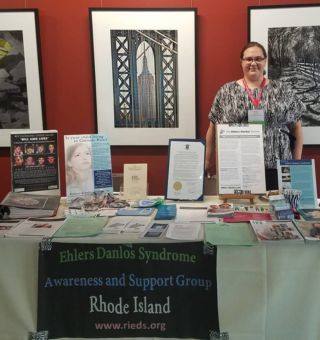

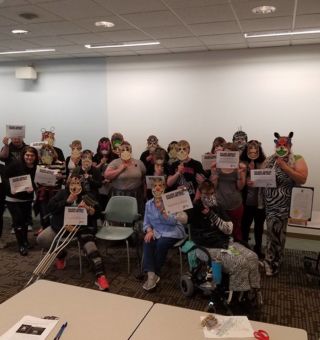
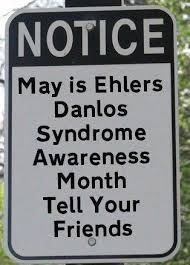
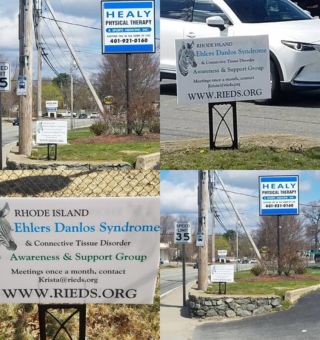
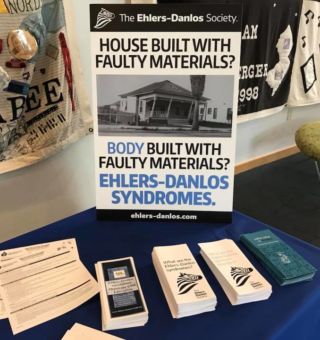





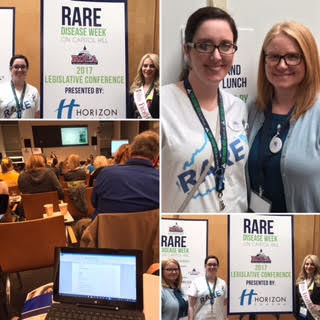


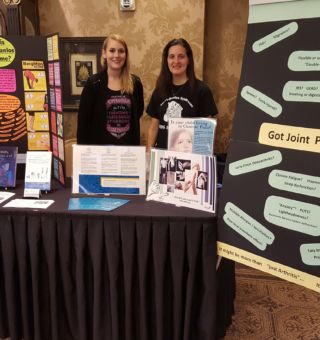






This comment has been edited to meet our comments policy standards.
Clinician associated trauma is real. I am a physician, a patient, and a patient advocate. My surgery involved three doctors at a nationally known hospital.
One doctor’s written response to my twenty page complaint filed on September 5, 2023, denied any malfeasance and ignored my factual list of shocking deviations from the accepted standard of care. I received no response from the hospital administrators or the department directors.
These doctors behave this way because they are accustomed to never being questioned or held accountable, which confirms that the hospital system is corrupt from the top down.
[Link removed]
Excellent article. Everyone who has ever been to a doctor should read this! Well-written and thoroughly researched.
I have PTSD from doctors. Recently the medical assistant didn’t call in my emergency med. It was 4 days late. X-ray didn’t compare my previous X-ray. ER traps you in discomfort and ignores you.
Sustain the excellent work and producing in the group!
The most important part of evaluating a patient is a good history and physical examination. Blood tests and imaging studies are more important to many clinicians. Patient do need to advocate for themselves when prescribed treatments are not getting relief, but at the same time, every hoof step is not a zebra and diagnosing rare conditions are not going to be quick or easy for a clinician if a patient bounces from physician to physician.